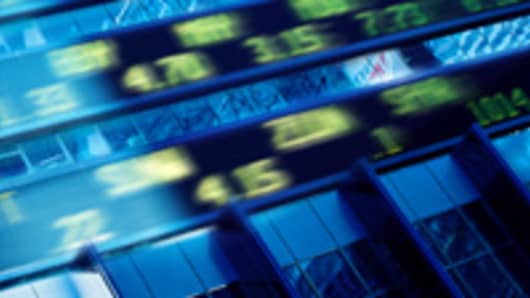Loomis Sayles Chief Market Analyst David Sowerby said Monday afternoon there’s a 50 percent chance of a 5 percent correction for the stocks. He says it happens on average twice a year and the market is due.
Sowerby said he doesn't expect to see more than a 5 percent decline.
Just about everyone in the markets has done well so far this year. Since 2012 began the Dow is up 8.4 percent, the S&P is up 12.2 percent and the Nasdaq is up 18.3 percent.
When the correction does hit, one way investors can protect themselves is through exchange traded funds .
Matt Hougan is the editor of the “Exchange Traded Funds Report.” Hougan says, “the best way to play a correction is to simply step aside.” But he also adds there are ways to use exchange traded funds to hedge your exposure and make short term profits. He goes on to suggest inverse ETFs saying “they obviously have their applications” but warns “they are ideally suited for very short term plays.”
He’s talking about funds that short different sectors such as ProShares Short S&P 500 which is the inverse of the S&P 500. ProShares Short QQQ is the inverse of the Nasdaq 100.
ProShares Short Dow30 is the inverse of the Dow 30. Then there are leveraged shorts as well. ProShares UltraShort Semiconductors is the inverse of the semiconductor sector, doubled. ProShares UltraShort Technology doubles the inverse of the Dow Jones Technology sector. Direxion Daily Financial Bear 3X Shares is three times short the Russell 1000 .
Hougan also says before a correction you often see an increase in buying inverse funds. February saw an inflow into inverse funds, the March inflow however has been lower. Those inflows show some investors are using these short ETF instruments to position themselves ahead of a possible pullback. Clearly though those bets have yet to pay off.
While nobody knows exactly when a correction will come, Loomis Sayles’ David Sowerby warns a pull-back in the market could be spurred by rising oil prices or higher bond yields.
Questions? Comments? Email us at marketinsider@cnbc.com



